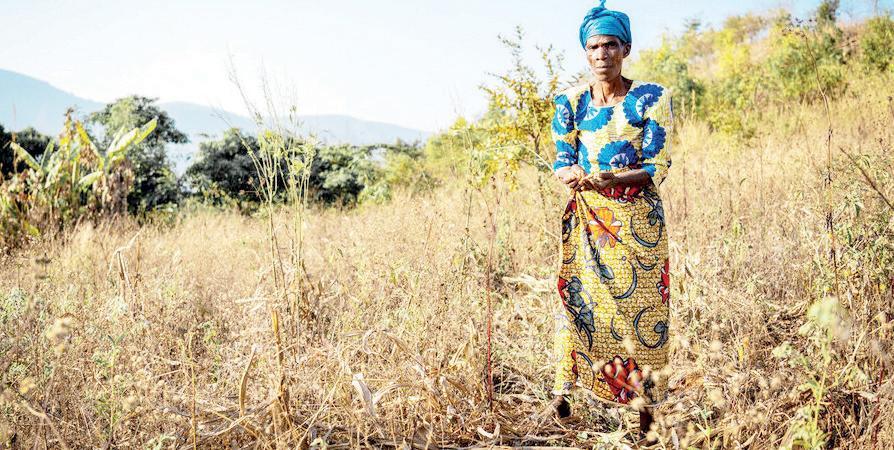Africa-Press – Malawi. In recent years, some of the most widespread and damaging drought events in recorded history have occurred due to climate change and resource depletion.
This is according to a new report from the United Nations Convention to Combat Desertification (UNCCD), the United States National Drought Mitigation Centre and the International Drought Resilience Alliance, which details the global impacts of droughts from 2023 to 2025.
“Drought is a silent killer. It creeps in, drains resources and devastates lives slowly. Its scars run deep,” UNCCD Executive Secretary Ibrahim Thiaw said.
“This is not just a dry spell,” Mark Svoboda, co-author of the report and Director of the National Drought Mitigation Centre, added. “This is a slow-moving global catastrophe, the worst I’ve ever seen.”
Svoboda stressed that the report highlights the need for systematic monitoring of how droughts affect lives, livelihoods and ecosystems on which we all depend.
According to the report, 90 million people across Eastern and Southern Africa are facing acute hunger, with some areas in the region experiencing the worst droughts ever recorded.
It states that in Malawi, Ethiopia, Zimbabwe and Zambia, maize and wheat crops have repeatedly failed.
The report also points to the effects of drought beyond Africa.
In September 2023, Spain suffered a 50 percent drop in its olive crop after two years of drought and record heat, which caused olive oil prices to double nationwide.
In Türkiye, groundwater depletion accelerated by drought has triggered sinkholes, endangering communities and their infrastructure, while reducing aquifer storage capacity.
In the Amazon Basin, record-low river levels in 2023 and 2024 led to mass fish and endangered dolphin deaths, disrupted drinking water supplies and created transport challenges for hundreds of thousands of people.
The report includes several recommendations to help combat the crisis, including stronger early warning systems, real-time drought and drought impact monitoring and nature-based solutions such as watershed restoration and the use of indigenous crops.
It also calls for more resilient infrastructure, including off-grid energy and alternative water supply systems, as well as global cooperation, particularly regarding transboundary river basins and trade routes.
Malawi is currently facing a deepening hunger crisis, triggered by one of the most severe droughts in its recent history.
VITAL—Maize remains Malawi’s staple food—WFPAlready vulnerable due to its dependence on rain-fed agriculture, the country was hit hard by El Niño-induced dry spells during the 2023–2024 farming season.
These mid-season droughts, particularly in the Southern and Central regions, devastated maize crops, the country’s staple food.
The situation became so dire that in March 2024, President Lazarus Chakwera declared a national disaster and appealed for $447 million (K776 billion at current exchange rates) in emergency aid.
At a two-day high-level stakeholder workshop in Blantyre last week, where partners in a climate risk and early warning systems initiative reviewed progress since the programme’s launch three years ago, the role of artificial intelligence (AI) in predicting extreme weather events was discussed.
Secretary for Natural Resources and Climate Change Yusuf Mkungula said that the government is seeking support to modernise Malawi’s early warning systems using AI-driven climate services.
“We are in a digital age where data and knowledge management are critical for survival. Accurate and timely climate information can mean the difference between safety and disaster for our communities,” Mkungula said.
He added that, despite implementing various climate information projects, Malawi continues to face challenges in data collection, dissemination and the reliability of forecasts.
“Our processes are still slow, largely due to outdated or limited systems. We are working hard to adopt AI to improve how we collect, manage and share climate data,” Mkungula said.
Meanwhile, projections in the 2025 Global Report on Food Crises indicate that at least 6.8 million people, or 33 percent of Malawi’s population, are struggling to meet their basic needs, particularly food.
Of these 6.8 million, the report shows that 5.7 million are in Integrated Food Security Phase Classification phase three, meaning they face a more severe level of acute food insecurity, with households experiencing significant limitations in food access and coping strategies.
“An analysis of Malawi showed that, while some macroeconomic impacts, particularly losses in foreign exchange, may be mitigated by policy measures, the broader decline in welfare is likely to have far-reaching effects, including increases in poverty and malnutrition.
“Reductions in official direct assistance—and the associated foreign exchange—also pose broader macroeconomic risks, undermining fiscal capacity and threatening currency stability and access to essential imports,” the report says.
For More News And Analysis About Malawi Follow Africa-Press






